March 20, 2025
I have been thinking a lot about crossings and borders lately. Fourteen days ago we left the southern Arizona desert wilderness, crossing the lower Colorado River where it meets the Gulf, across the border into California. Promptly upon crossing, the weather shifted. As we climbed over the Sierras towards the coast, a cold fog descended on the hills and for the first time in 36 days (yes, we counted!) we experienced a light rain. The feeling of this crossing was heightened by moving from desolate places through more and more densely populated communities. After seeing SO few people for SO long, it was head spinning to be surrounded by humanity- especially the particular humanity that is the San Diego suburbs.
Muggins Wilderness, AZ
It was disorienting after so much quiet; like entering another country —people were speaking the same language here, of course, but with vastly different attitudes and outlooks. We moved from lonely desert ranch crossroads to well heeled surf towns with cafes and wine bars.
For the first time in months, we slept under a “proper roof” at my old high school friend’s place just outside of Encinitas and caught up on 30 years. Rachel’s home was a great staging place for our next crossing, this time heading into Baja California. We shared a few meals together and gave them the last of the fresh fruit we had in the van. Tom made a needed fix on our gray tank emptying valve. We said our goodbyes and headed south to the Tecate border crossing.
Rachel’s Place, Carlsbad CA
Given the current politics and the roller coaster antics regarding immigration and tariffs, we weren’t sure exactly how the border crossing experience would be. And, outside of the occasional car drive to Canada, although we are both well traveled internationally, nearly all of our border crossings involved flying with the requisite forms and standard airport processes. This would be our first international crossing in the van.
If we thought it was a readjustment to cross from weeks in the desert southwest to the gleaming coastal towns of California, crossing the border into Mexico to van camp for several weeks was like stepping onto another planet.
The difference was immediate and significant, starting with figuring out how to get our FMMs- the official document you have to carry in Mexico as a foreign visitor.
The process went like this:
We were stopped at the border. Guards asked where we were from and where we were going in Spanish. They took a cursory look inside van. All good. I manage to dust off enough Spanish to ask them where we go to get the FMMs. I make out that we need to take a right and park on the Mexico side and get the paperwork completed and stamped. Okay, got it. We pull through the checkpoint and begin to make a right— immediately folks on the street are stopping us. This right turn is a one way street and we are going the wrong way! We back up and look for a better right turn. We hook a right on a small lane and then another right to come around the block. There is no obvious signage or parking for the FMM office. I jump out of the van and approach a guard near what looks like an official building. She points down a second alley. We park in front of a dentist’s office and walk back to where we crossed. I ask again about getting an FMM. We are sent with a temporary pass through a metal detector that lights up and beeps at me. I explain in broken Spanish “metal hips”. We walk through, back to where the van was inspected. We enter an office and wait. An officer invites us into a room where we sit at desks and complete the FMM forms. We wait some more. He tells us to take our completed forms to another office across the street to pay for the FMMs. We go to this office, pay the fee and get receipts. We return back to the officer who had us complete forms. He asks for our passports, forms and pay receipts. We wait some more. He stamps everything and sends us on our way. We walk back through the metal detectors (I beep again and so explain “hips” again) return the passes, and we make it back to the car. This crossing was reasonably uneventful but still— it was a sort of forced recalibration; we are strangers. We are the other, the visitor. Strangers in a strange land. Everything is different. Not in Kansas anymore.
The traffic from Tecate to Ensenada is chaotic and busy. We are learning, in real time, the conventions of driving in Mexico; very few traffic lights exist in Baja and there are entirely different ways of signaling and passing. If you want to immerse yourself into the thick of another culture, try DRIVING there. We had planned to stop on the first leg to Ensenada to do a wine tasting or two but the driving and roads made us think better of it. And honestly, maps and descriptions online didn’t always match what was the reality.
We manage a grocery shopping trip and make it to our first “RV park” on the outskirts south of Ensenada. More mental adjusting. An RV park in Mexico is not like what you imagine in the US. We typically don’t stay in RV parks in the US and prefer, when we can, to wild camp. But in Mexico we know that we don’t yet know how and where to do this. Typically an RV park in Mexico is land that belongs to a family that lives on site. They offer spots to park, perhaps somewhere scenic, but often from the road, you wouldn’t know it. Sometimes these parks have communal toilets or a place to rinse off. Sometimes there are no services at all. What these RV parks do offer is someone around keeping an eye on things. We travel down a steep dusty lane, with barking dogs roaming around, to a small rocky bay. A woman asks for a $250 pesos. No assigned spots. We are directed to an area with palapas— thatched, shaded lean-tos that we can choose from. We are the only campers that night. Climbing out of the van, our hands and jaws finally unclench. Time to unwind. We were down for the count by 8:30. We needed to sleep off our initial culture shock.
When most Americans think of traveling in Mexico I think, largely speaking, they conjure images of well manicured, gated, palm lined resorts, replete with pool side bars and day visits to Mayan temples. Think Cancun, Cozumel, the Yucatán peninsula. Some of this kind of experience does exist in Baja —mostly at the far end of the peninsula in Cabo San Lucas. But most of Baja is entirely another thing— it is vast, largely wild desert and mountain terrain and very sparsely populated.
Vast desert drive
There are only five major “highways.” By highways, I mean that the roads that are actually paved. Largely speaking highways are just two lanes, one in each direction. Mostly, there are NO shoulders, and the ground drops off precipitously into sand, rocks and scrub on each side of the road. These roads carry nearly ALL the vehicular traffic going anywhere on the peninsula— cars, vans, pick up trucks, buses, and huge semis including the monster “doubles.”
In addition, there are car-eating potholes that you have to play a game of reverse whack a mole to avoid. There is little room for error, especially when you are contending with oncoming traffic with just inches between you. When these “highways” traverse across the mountainous spine of the peninsula, you must also navigate blind hair pin turns, steep ascents and descents, all while crossing thru seas of potholes.
Reverse Whack-A-Mole
Outside of the coastal towns, roadside communities are generally dusty crossroads, where dogs seem to be more plentiful than people. There are long stretches with nothing but an occasional half built home or abandoned street side store or a long-shuttered gas station. Much of the Baja gives Mad Max vibes. And most travelers who fly in and out of Baja never see this part of the peninsula.
Giving Mad Max vibes
The driving conventions are also significantly different than what we are accustomed to in the US. Because the highways are only one lane in each direction, AND there are no shoulders, the passing convention is as follows:
If you want to pass, you come up behind a vehicle. The vehicle ahead of you will look foward, determine there is no immediate oncoming traffic. They will use their left hand turn signal indicating to you that it is safe to pass them using the oncoming traffic lane. Reciprocally, if someone wants to pass you, you slow slightly, check to make sure the oncoming lane is clear and use your left turn signal to them that they can pass you. A HIGH LEVEL of trust in your fellow drivers is key - it’s about communal coordination. It all works, but at the same time is terrifying (especially when passing large trucks) and it is so antithetical to the rules-based individualistic approach to driving we have in the US. More mental recalibration.
Within inches…
And then there are military checkpoints and inspections. We’ve been through five checkpoints on our journey so far. At two of the stops we were waved through without inspection, just a few cursory questions and a review of our documents. At the other three we had a much more thorough inspection. They ask where we are from, where we have been and where are going. Then we’re asked to step out of the vehicle and one of the soldiers enters the van while another stands with you. They open several drawers and bags, search under pillows, feel under our mattress, look in cabinets; they ask questions as they search “what is in here?” or “What is this?” The whole exchange is in Spanish. Luckily I have enough Spanish to understand and answer questions; this seems to be appreciated. At one of the checkpoints the solider asks our names, and offers that my Spanish is pretty good. Another asks me how I am enjoying Mexico and my favorite place so far. There is no hurry and you absolutely DON’T rush them. At one inspection, a soldier mentions our NY plates and comments “Oh, you are from the city of millionaires!” I was quick to say that we were not from the city, but “north in the countryside.” During these military “crossings” I was very (self) conscious of what might be the current prevailing view of Americans.
We have spent a significant amount of time in the southwestern US and are accustomed to US border patrol checkpoints, so generally we understand the nature of these processes.
That said, it is a stress inducing experience to have armed soldiers make you get out of your vehicle, ask you questions in another language and search through your things. All of the soldiers were generally polite and kind, making occasional small chat and smiling. We smiled back and adapted to their pacing. In each case we were moved on without incident. None of these inspections lasted longer than 15 minutes or so, but after we cross through these checkpoints and pull away we both breathe sighs of relief.
We have heard from other foreign travelers down here that the inspections can be short and polite exchanges… or not… but I think your attitude towards the process, and having a little Spanish makes a big difference (Tom, with no Spanish, relied on me for these exchanges so the pressure was on!)
We have also heard from Canadians (there seem to be a preponderance of RV travelers from British Columbia down here) that they have mostly been waved through these checkpoints without any inspection. Certainly we could see that many locals were waved through.
Could it be because of the political climate the Americans are getting more attention? I don’t know. Possibly. Could it be that we were unusual? We were the only east coast, New York plated vehicle that we saw in our travels so, possibly, it was a sort of novelty? Certainly other foreign travelers seemed surprised to see that we had come from so far. Could it be that Americans are most likely to possess weapons and carry them illegally across the border? Let’s face it, sadly, this is entirely possible.
This is all a long winded way of saying that driving in Baja has been stressful but as we often remind ourselves in adventures like these, the juice is well worth the squeeze.
We delight in the arrivals — which are worth all of the hard work of the many crossings; Windswept pacific cliffs. Remote beach coves with kind vendors selling baked bread and freshly caught fish. Lively, music filled, village squares. Watching (and touching) curious gray whales. Waking up to postcard-like sun rises and kayaking on clear teal bay waters. Traveling through deserts with massive thousand year old cacti and ascending through dark volcanic mountains that are a dramatic backdrop for the deep blue of the Sea of Cortez.
San Quentin cliffs, Pacific Coast, Baja
Sunrise, Playa El Coyote
Mission San Ignacio
Kayaking, Playa El Coyote
Communing with Gray Whales, Guerrero Negro
In fact, we have come to understand and appreciate that van travel— slow travel that demands effort in the “getting there” — both the actual physical “crossings”, and also the more figurative “personal crossings” to different mindsets and ways of thinking, is deeply transformative.
Sleeping with stars, Playa Rancho Grande

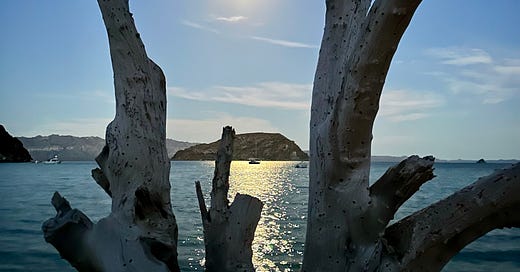


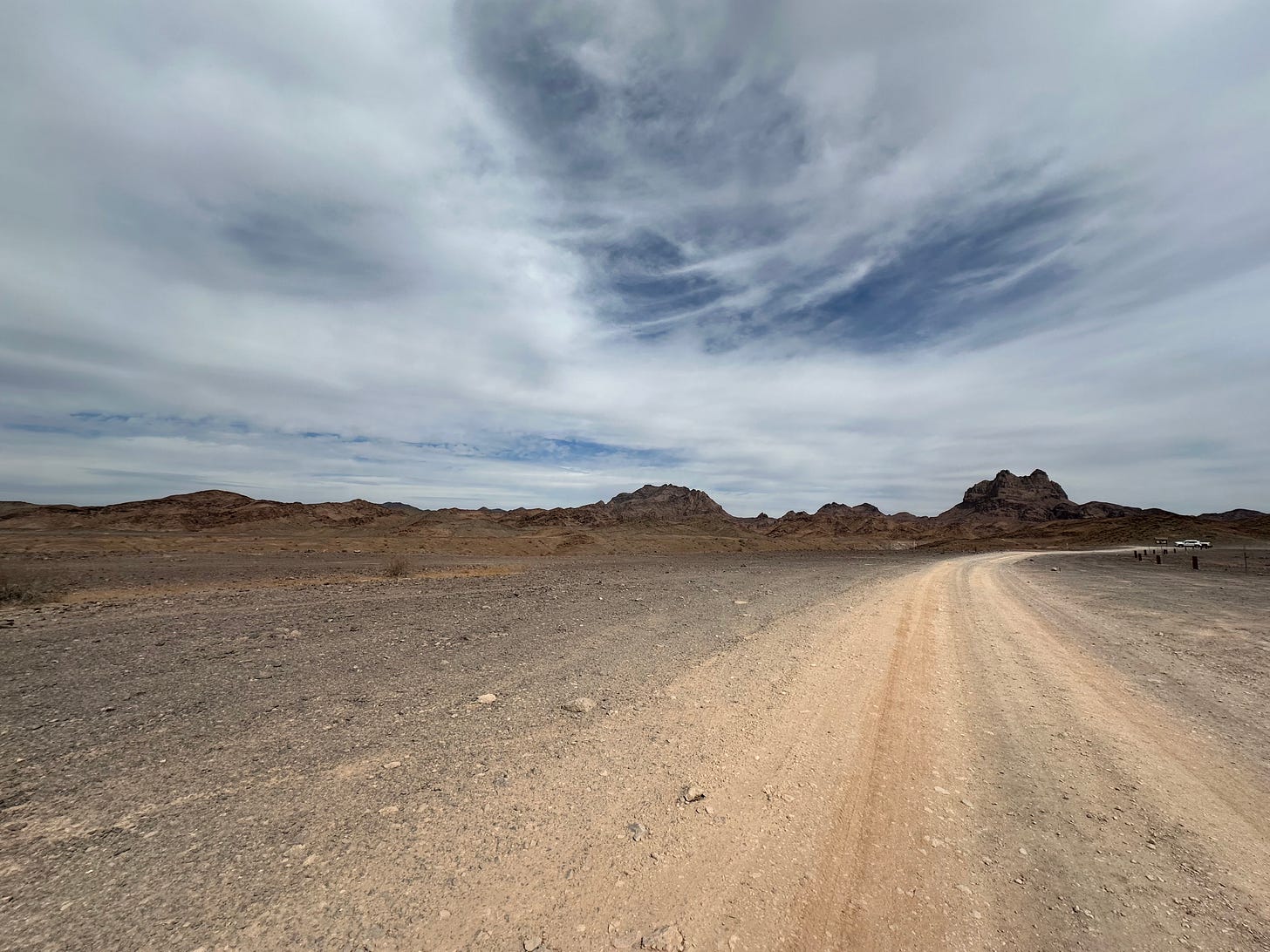
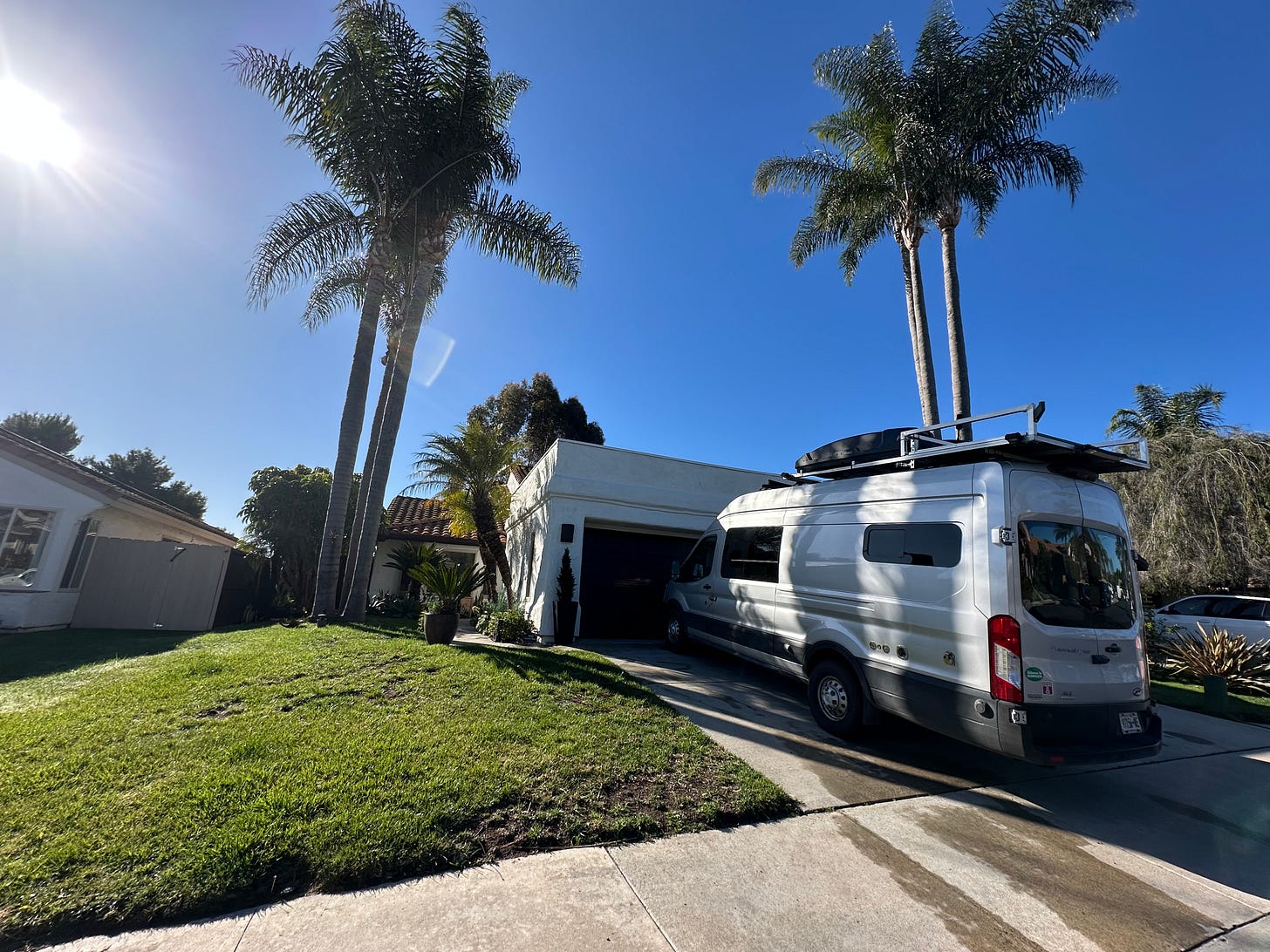
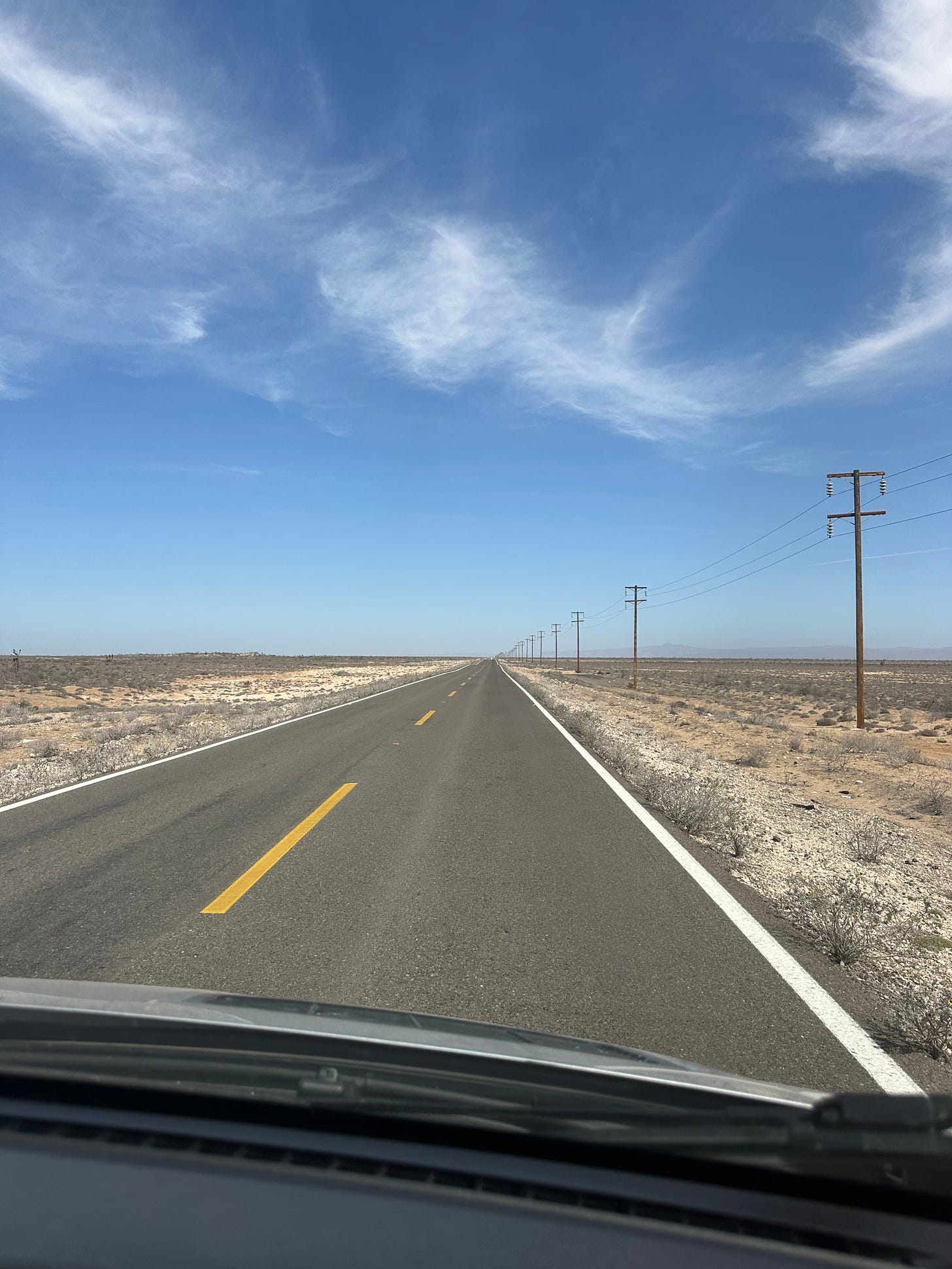
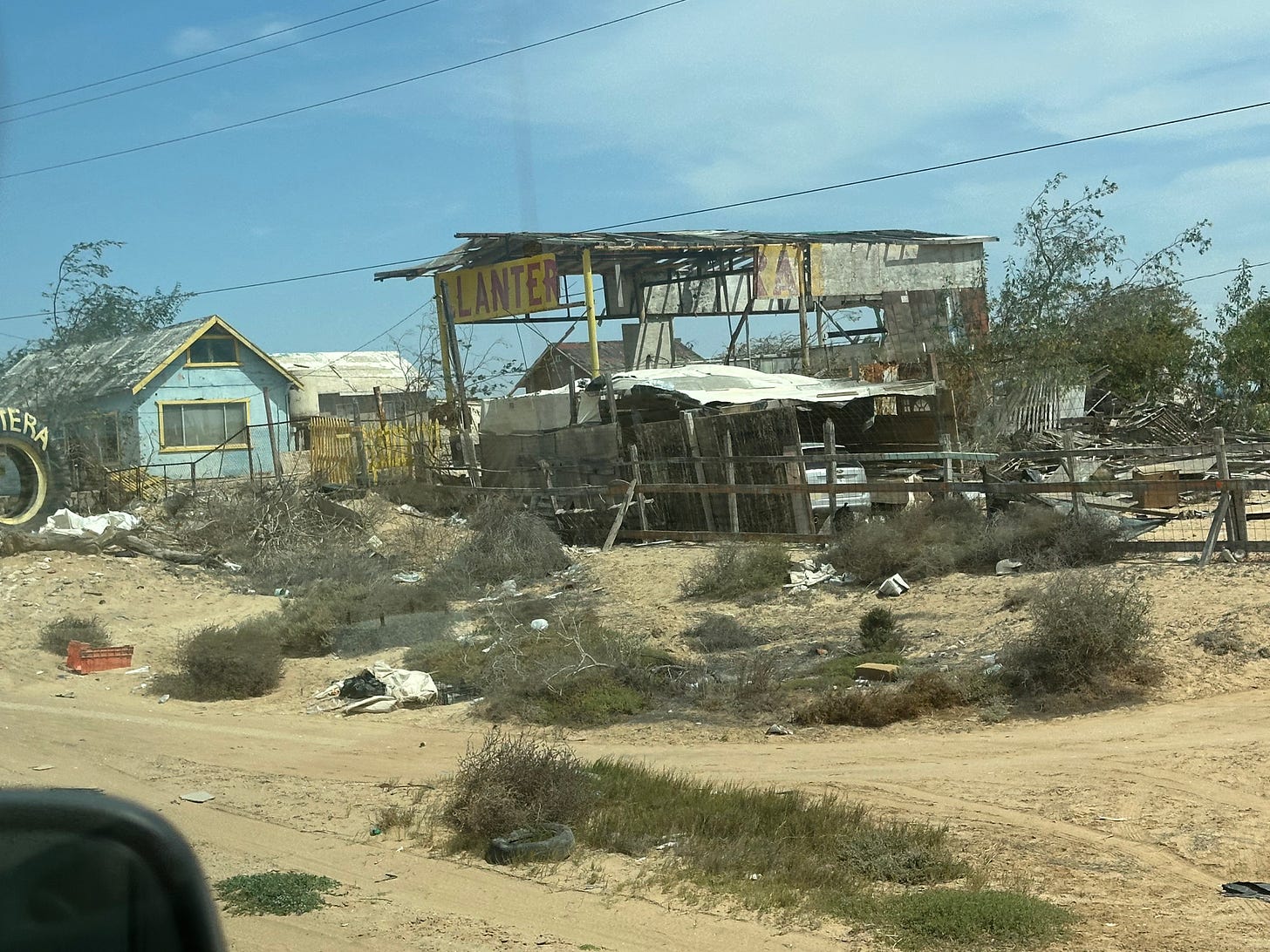
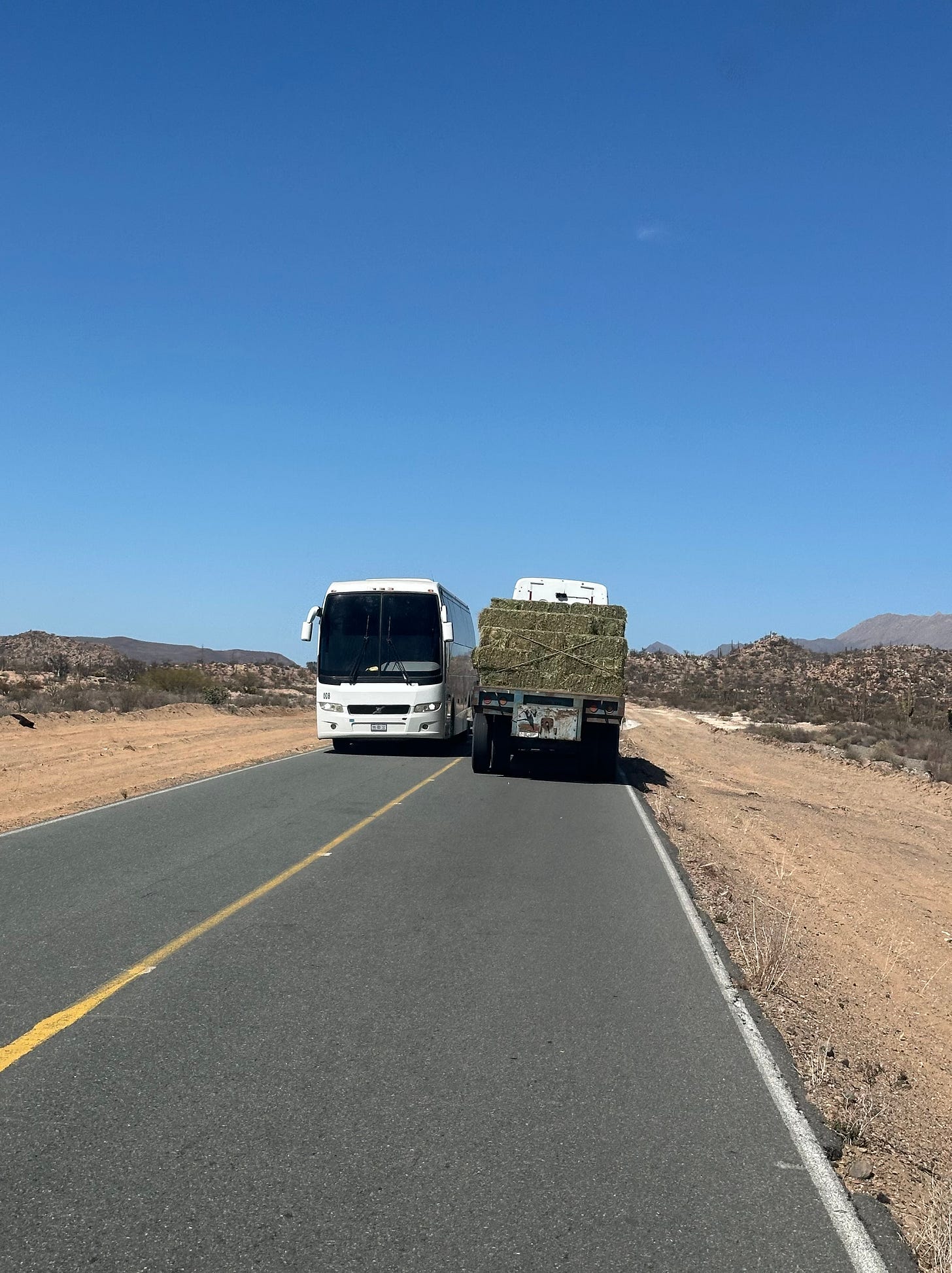

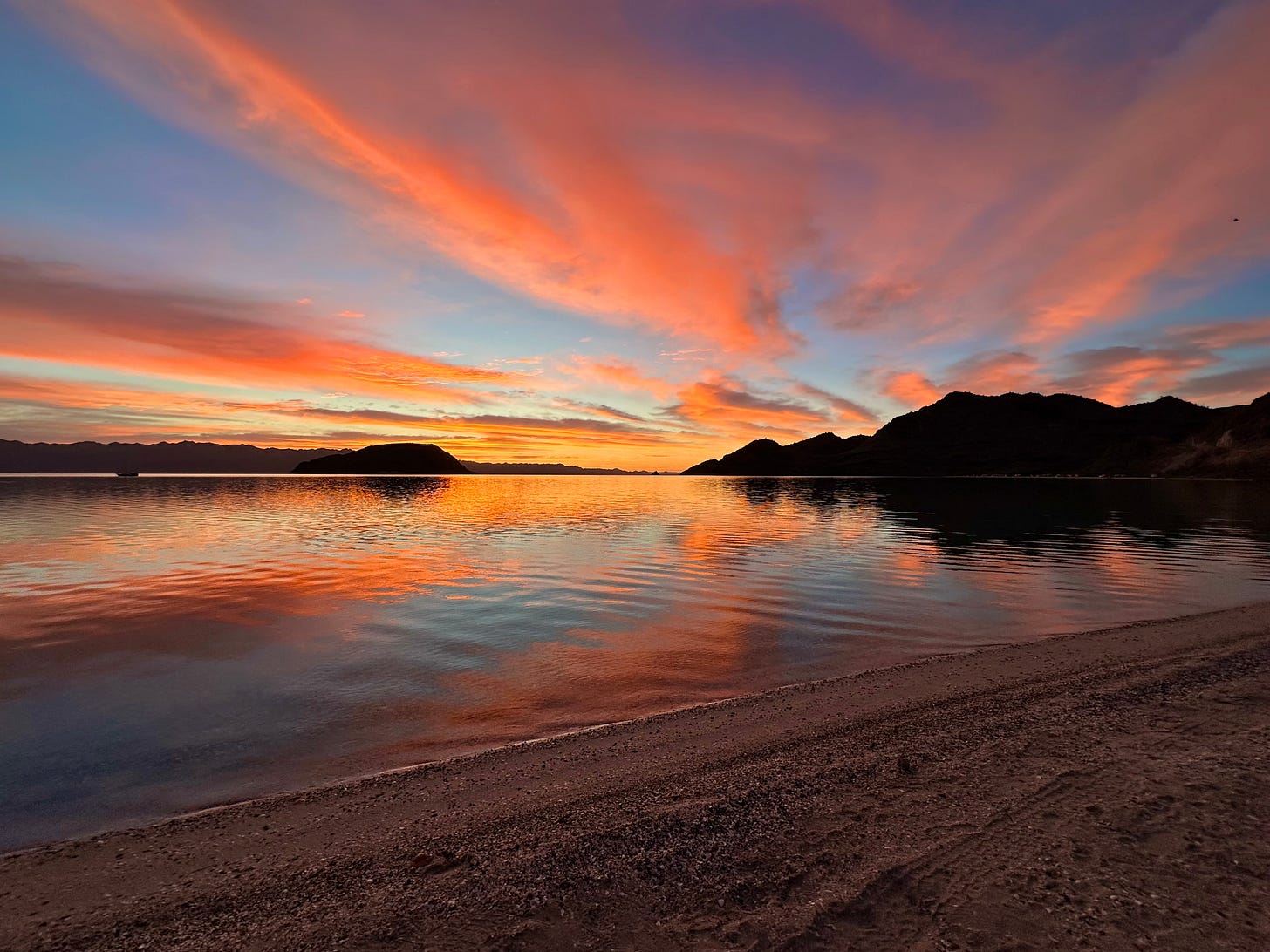
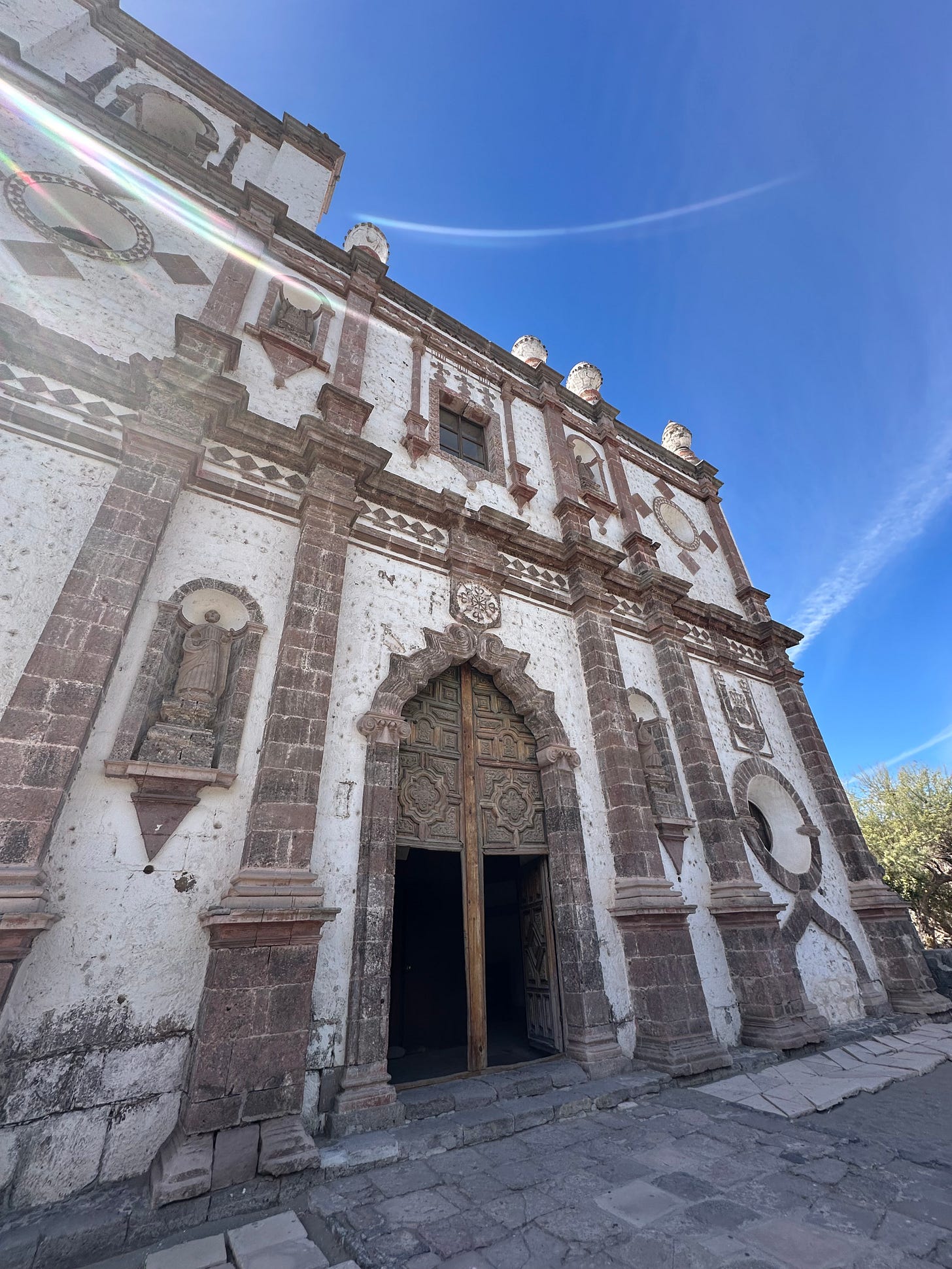
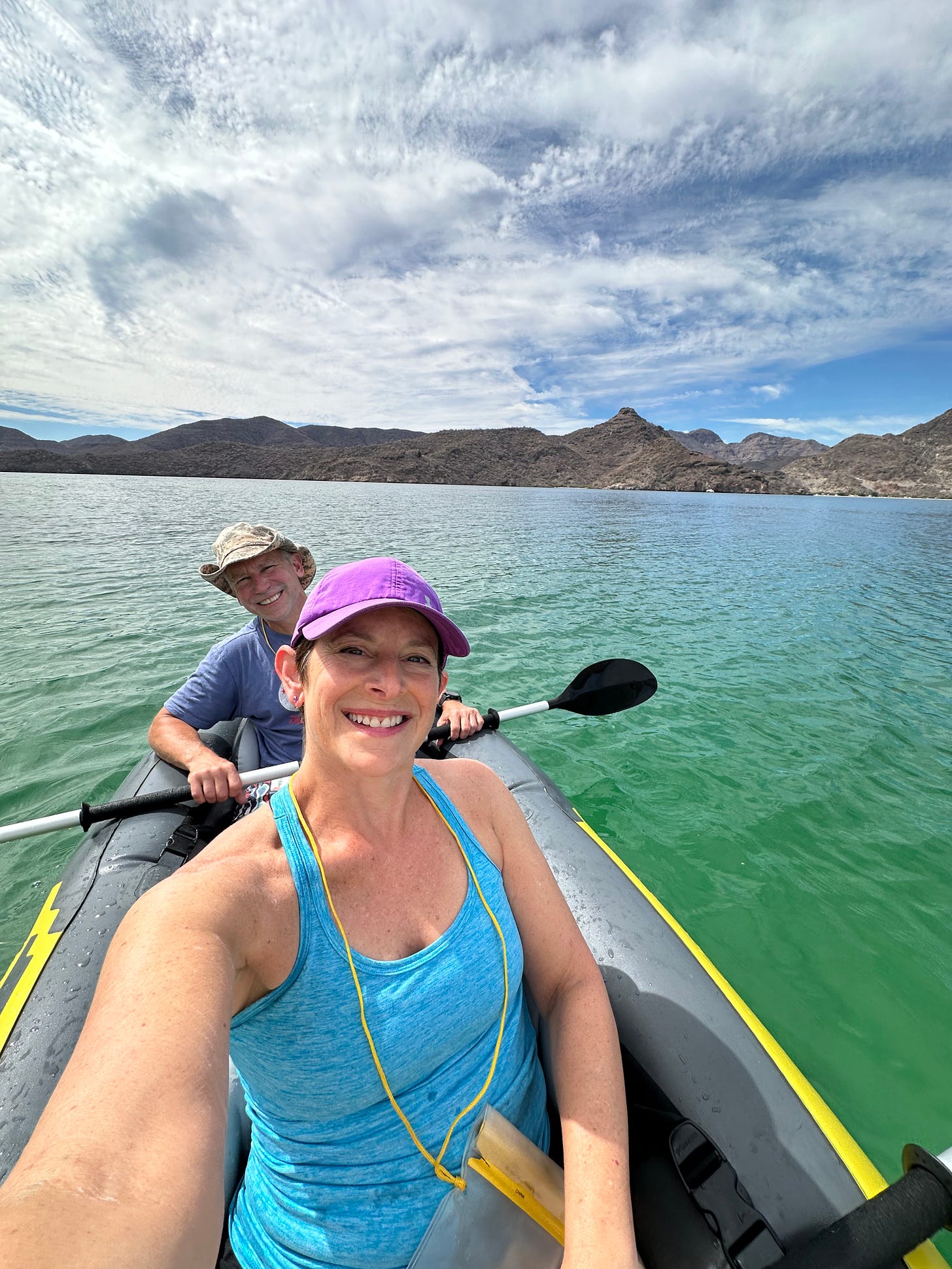
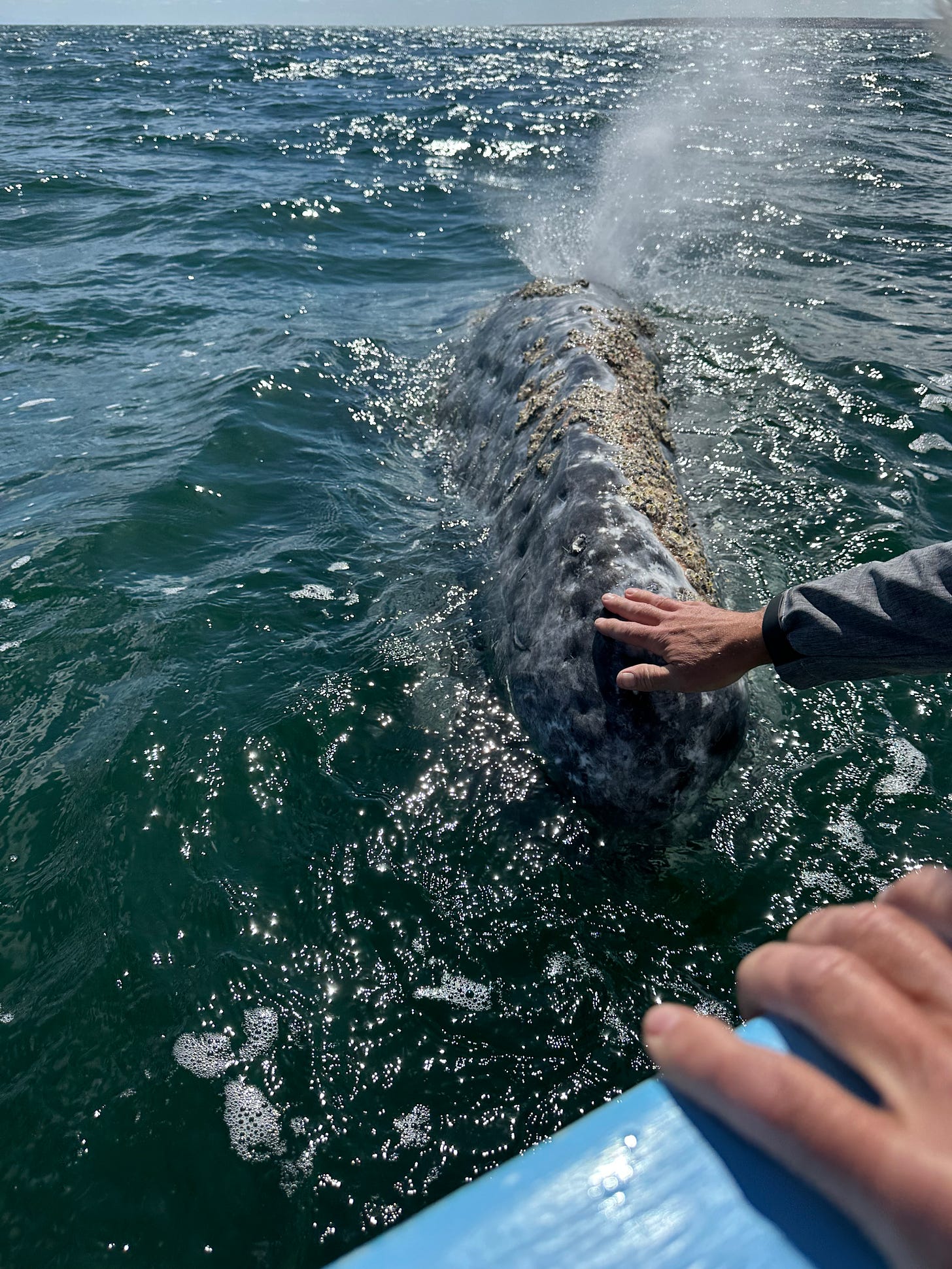
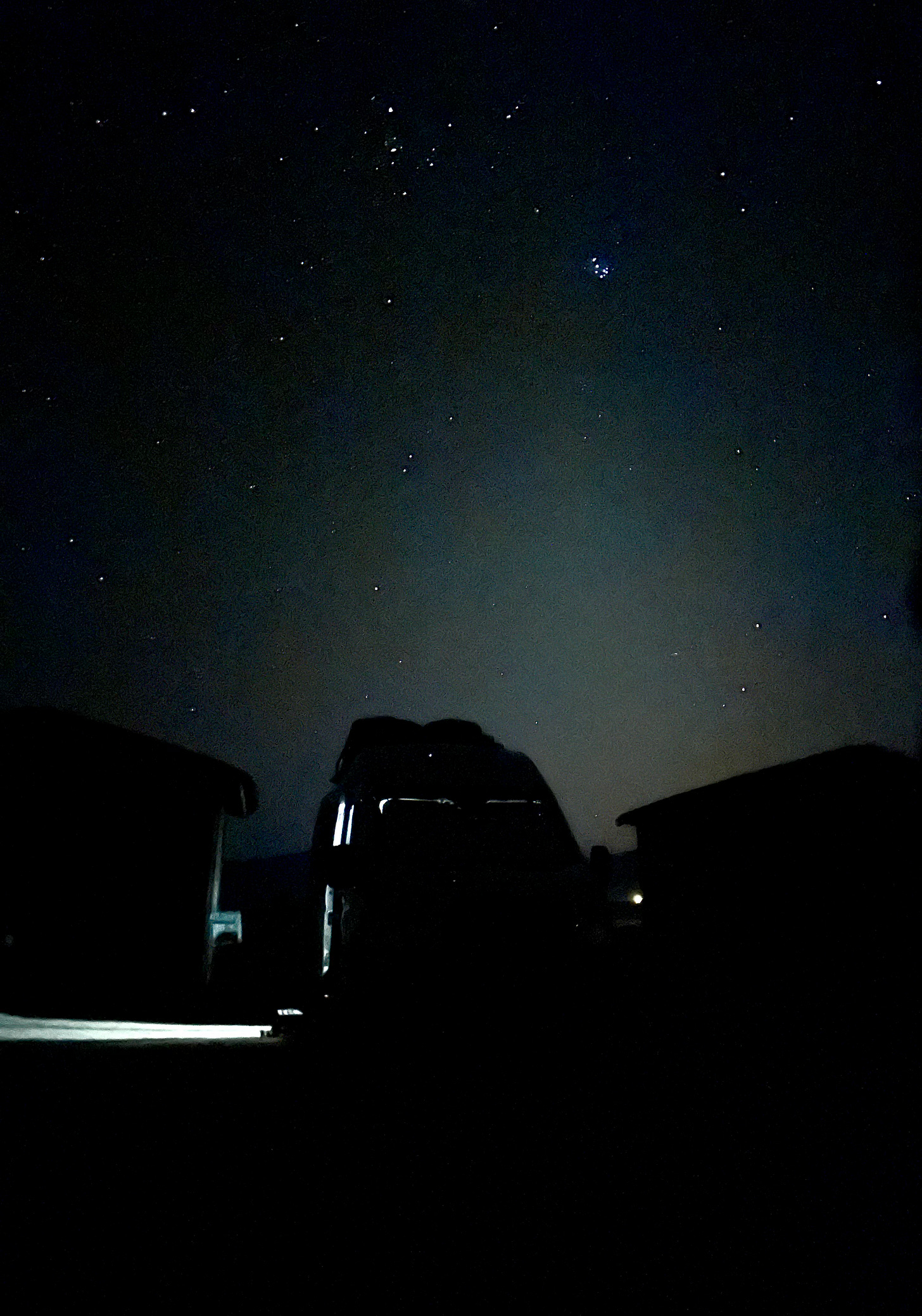
When we had attended our son's destination wedding in Punta Cana, there were guards with guns because of robberies, and drug issues. That's very dangerous.